How to Gain Citizen Buy In
Upcoming Events
Related News
Introduction
Effective county governance relies on citizen engagement through actions such as votes on bond proposals, input on budget proposals and participation on key advisory boards. Counties excel in harnessing the involvement of their citizenry in decision-making to work effectively as a community. Developing successful messaging, using social media and implementing other public outreach tools are a few ways in which county officials engage with their residents.
At NACo’s 2017 Annual Conference, the Counties Futures Lab hosted a workshop on how county leaders engage with and gain buy-in from their citizens. Moderator Michael Montplaisir, auditor, Cass County, N.D., and presenters Verdenia Baker, county administrator, Palm Beach County, Fla. and Karl Keith, auditor, Montgomery County, Ohio, shared their insights on successful initiatives undertaken in their counties.
Printable PDF Speaker PresentationsKey Takeaways
Transparency is key along each step of the way
Transparency is key along each step of the way. Being transparent creates trust and helps answer citizens’ questions and concerns. Having the public’s trust is necessary to establish credibility for the proposed action and get approval at the ballot.
Partner with stakeholders to reach out to the community
Partner with stakeholders to reach out to the community. Collaborating with other governments, nonprofits and business groups helps with outreach efforts. These partners expand the outreach, educate the public and respond to any false claims made by opponents.
Meet your residents where they are
Meet your residents where they are. Engage residents across your entire jurisdiction to ensure that your message reaches everyone. Hold meetings throughout the community or involve the media to help promote the action needed.
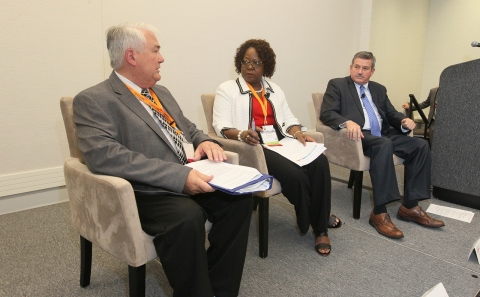
Palm Beach County, Fla.
2016 Population: 1,443,810
2015 County government employees: 6,100
Note: The number of county government employees includes both full-time and part-time employees.
Source: NACo County Explorer
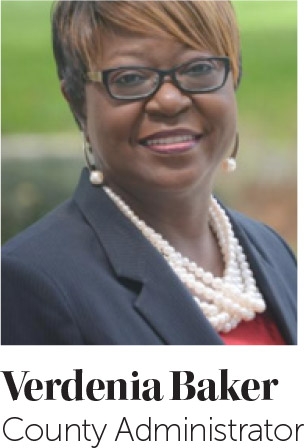
Palm Beach County, Fla. is a populous and growing region with rapidly aging infrastructure. In the wake of the latest economic downturn, the implementation of the county’s improvement plan suffered as revenues decreased: Many capital improvement and repair projects went unfunded, and county-owned facilities and roadways started to show signs of significant wear.
Palm Beach County was not alone in facing these challenges. Thirty-nine municipalities within the county’s borders and the county’s school district also had crumbling infrastructure. Working together, the county reached an agreement with the cities and the school district to raise funds to improve aging locally owned infrastructure. The proposed solution was a one-cent sales tax distributed three ways: 50 percent to the school district, 30 percent to the county and 20 percent to cities (See Figure 1). The tax would sunset after 10 years and was projected to raise $2.7 billion.
“Transparency was key. We opened our books. Every time [opponents] would come up with a different issue, we would address that issue. Both major regional newspapers endorsed our sales tax because of transparency. It is key – just put it out there.”
–Verdenia Baker, County Administrator,
Palm Beach County, Fla.
To gain support for the one-cent sales tax, the county reached out to and worked with the business community, civic organizations and homeowners’ associations to educate the community on the need to address the aging infrastructure. Educational materials were created, including a website, to identify county, school and city projects in specific neighborhoods. The media was invited to accompany the mayor and staff on site visits to facilities that showed signs of distress and needed repairs.
Working with the cities and the school district, Palm Beach County constructed the language of the ballot measure based on where each entity would spend the additional revenue. By detailing how the governments would use the extra funds, residents could see how the buildings, roads and buses they use every day would be improved. As a result, residents voted to increase the one cent sales tax with over 56 percent of voters in support.
According to Ms. Baker, THE KEY WAS TRANSPARENCY, particularly with opponents of the increase. Those who opposed the tax increase were invited to examine the county’s budget to get assurance that funds were being spent properly and that bonding for projects would not be a viable, long-term solution. The county also invited independent third parties to examine its financial records and provide feedback to concerned parties and the public. Additionally, the county showed local businesses how failing infrastructure can impact their operations. For example, an aging bridge may not be able to hold the weight of a semi-truck carrying goods. Palm Beach County provided documentation to the local newspaper editorial boards that demonstrated transparency throughout the entire process. Ultimately, the local newspapers endorsed the sales tax ballot measure due to the high level of transparency.
Figure 1. Distribution of One-Cent Sales Tax
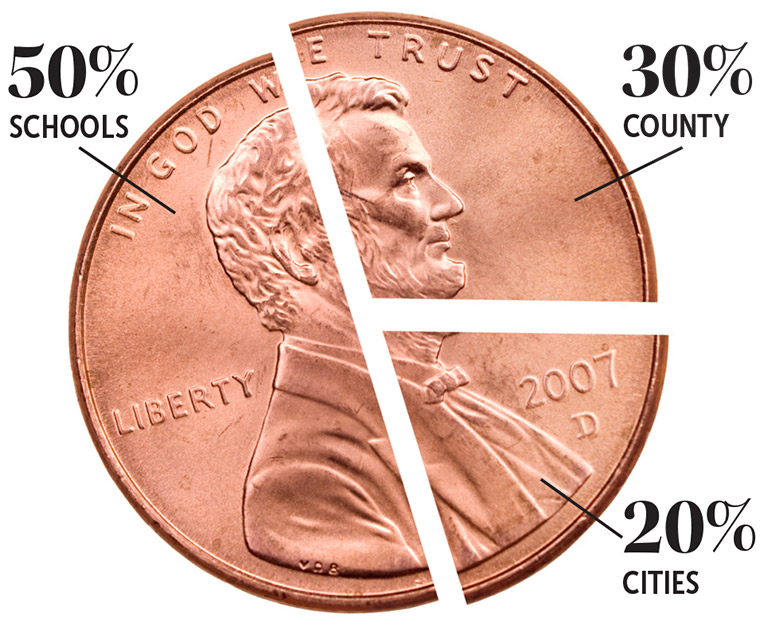
Cass County, N.D.
2016 Population: 175,249
2015 County government employees: 546
Note: The number of county government employees includes both full-time and part-time employees.
Source: NACo County Explorer
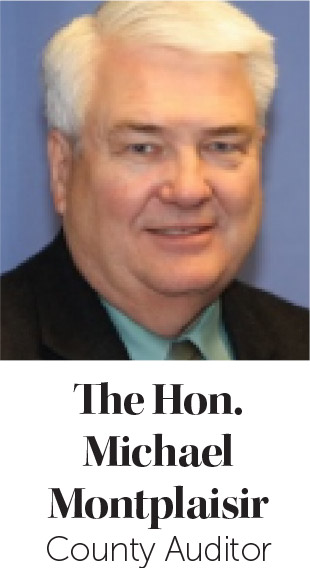
Cass County, N.D., is situated in the Red River Valley in a flat area where the thawing river in late March makes the county prone to significant flooding. The flood stage has been exceeded 49 times out of the last 110 years, including every year from 1993 through 2011. Clay and sandbag dikes are temporarily erected to prevent floods from damaging properties, but they are removed after the flood.
“We did a lot of outreach for this [ballot measure]. We had a lot of public meetings … We engaged with the Chamber of Commerce, one of our partners, to start an advertising campaign. We had a lot of ambassadors, they had a lot of contacts [and] did a lot of speaking engagements.”
—Michael Montplaisir, County Auditor,
Cass County, N.D.
In 2016, Fargo and Cass County formulated additional plans for flood protection in the area. However, given the previous increases (See Figure 2), there was hesitation to raise the sales tax levy. The solution was to ask voters to extend the current flood control sales taxes beyond their sunset dates of 2030 and 2031 to 2084. A vigorous campaign was needed to pass this measure for several reasons. For one, there had not been a major flood in several years. Additionally, there were three votes on sales taxes for this project in the past and it was a vote on something that extended decades into the future. The city and county needed a polished message to address these challenges when reaching out to voters.
Cass County did not expend funds to promote the ballot measure. Instead, “ambassadors” from several local jurisdictions and the business community reached out to voters for educational purposes through public meetings. Additionally, the Chamber, representing businesses in Fargo, Moorhead and West Fargo, served as a partner with the county and ran ads during North Dakota State University football games promoting the tax increase. The ballot measure passed in November 2016 at both the county and city level, at rates of 64 percent and 66 percent, respectively. The county credited the successful passage of this measure to their ability to demonstrate the need for action through PARTNERSHIPS WITH STAKEHOLDERS in the community.
Figure 2. Timeline of fundraising for flood protection:
2006: Protection planning began within the county in earnest when the water resource districts, city of Fargo, N.D., Cass County officials and federal agencies met to find a solution to the impacts of flooding in the area.
2009: Largest flood on record results in Fargo, N.D., holding a special election for a half-cent sales tax for flood protection. Ballot measure passed with 91 percent in support.
2010: Cass County puts a half-cent sales tax on the ballot for a flood protection plan after another major flood. Ballot measure passed with 64 percent in support.
2011: Fargo puts another half-cent sales tax on the ballot, which passed with 60 percent in support.
2016: Cass County and Fargo both extend flood control sales tax to 2084, with 64 percent and 66 percent in support, respectively.
Montgomery County, Ohio
2016 Population: 531,239
2015 County government employees: 4,508
Note: The number of county government employees includes both full-time and part-time employees.
Source: NACo County Explorer
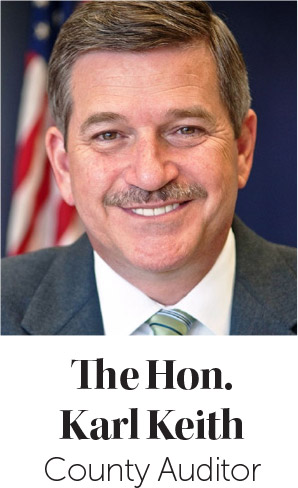
In Ohio, county auditors wear many different hats. They serve as the county’s chief fiscal officer, as the assessor for property taxing purposes and as the sealer of weights and measures. Any commercial device used to weigh or measure products for sale, including gas pumps, must be tested by the auditor’s office.
During a routine inspection in 2013, Mr. Keith’s office found a card skimmer at a gas pump. These devices allow individuals to steal credit card information from unsuspecting consumers. In Ohio, 51 card skimmers have been found in 19 counties since 2013.
“To raise public awareness of this [card skimmer] issue, the first thing we did was host Skimmer Summits around the state at different sites to take advantage of the media market in those areas.”
–Karl Keith, County Auditor,
Montgomery County, Ohio
To raise public awareness on this issue, the state's auditor association MET RESIDENTS WHERE THEY WERE: they held skimmer summits in eight counties throughout the state to reach as many Ohio residents as possible. At these summits, education was provided for law enforcement, weights and measures officers, gas station owners and concerned residents on how to spot card skimmers. County auditors also held a skimmer sweep over Labor Day weekend where they inspected 12,000 gas pumps and found five skimmers.
The statewide sweep provided an opportunity for auditors to meet with media to discuss how Ohio residents could be affected by a skimmer crime. As a result, there were 70 news stories among 10 media markets. Social media was also used as another avenue to maintain the auditors’ engagement with citizens.
As Mr. Keith explained, the public is the best line of defense in protecting against the illegal activity of card skimmers. County auditors in Ohio engaged with their residents through the summits, sweeps and resulting media attention. The result was consumers, gas station owners and weights and measures sealers making a concerted effort in looking for card skimmers to protect against theft and fraud.
What are card skimmers?
“Electronic devices which steal credit card information from card readers on gas pumps and ATMs”

Conclusion
Gaining trust and approval from residents is critical for counties in these fiscally-lean times. This process â though necessary â can be difficult in an environment marked by eroding levels of trust in government. As Ms. Baker, Mr. Keith and Mr. Montplaisir detailed, transparency, education and engagement are all critical to build trust between citizens and their county government.
Acknowledgments
The author would like to thank Verdenia Baker (Palm Beach County, Fla.), Karl Keith (Montgomery County, Ohio) and Michael Montplaisir (Cass County, N.D.) for their presentations during the workshop that form the basis of this report. Within the National Association of Counties, the author would like to thank Emilia Istrate, Christina Iskandar, Jonathan Harris, David Jackson and Kelsey Wilson for their helpful comments and contributions. The author also expresses his appreciation to his Public Affairs colleagues for the graphic design and the website of the report.
For more information:
Dr. Emilia Istrate
Managing Director, Counties Futures La
research@naco.org
Andrew Hartsig
Research Manager
research@naco.org
About the Counties Futures Lab
The NACo Counties Futures Lab brings together leading national experts to examine and forecast the trends, innovations and promises of county government with an eye toward positioning Americaâs county leaders for success. Focusing primarily on pressing county governance and management issues â and grounded in analytics, data and knowledge sharing â the Lab delivers research studies, reports and other actionable intelligence to a variety of venues in collaboration with corporate, academic and philanthropic thought leaders to promote the county government of the future.